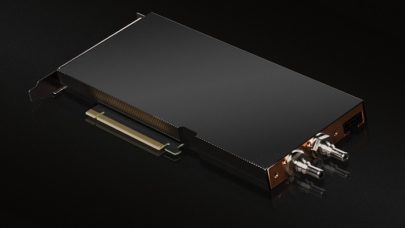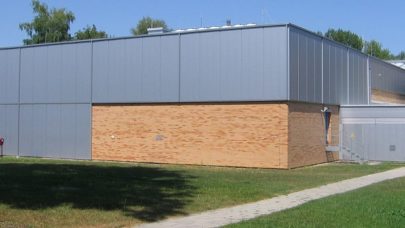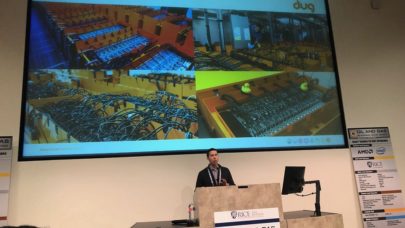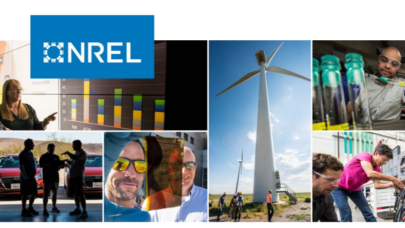
Argentina’s Clementina XXI: Latin America’s Fastest Supercomputer
April 1, 2024
In a joint program between Argentina's Undersecretary of Science and Technology and Minister of Defense, Argentina is home to the most powerful supercomputer in Read more…

Nvidia Bakes Liquid Cooling into PCIe GPU Cards
May 24, 2022
Nvidia is bringing liquid cooling, which it typically puts alongside GPUs on the high-performance computing systems, to its mainstream server GPU portfolio. The company will start shipping its A100 PCIe Liquid Cooled GPU, which is based on the Ampere architecture, for servers later this year. The liquid-cooled GPU based on the company's new Hopper architecture for PCIe slots will ship early next year. Read more…

Asetek Announces It Is Exiting HPC to Protect Future Profitability
September 22, 2021
Liquid cooling specialist Asetek, well-known in HPC circles for its direct-to-chip cooling technology that is inside some of the fastest supercomputers in the world, announced today that it is exiting the HPC space amid multiple supply chain issues related to the pandemic. Although pandemic supply chain... Read more…

Max Planck Society Begins Installation of Liquid-Cooled Supercomputer from Lenovo
July 9, 2020
Lenovo announced today that it is supplying a new high performance computer to the Max Planck Society, one of Germany's premier research organizations. Comprise Read more…

Cooling for Maximal High-bandwidth Processor Performance and a Bellwether Cluster Deployment
April 17, 2020
Heat and the impact of high processor memory bandwidth are key factors that must be considered when procuring a cluster that can realize the full potential of t Read more…

Goonhilly Unveils New Immersion-Cooled Platform, Doubles Down on Sustainability Mission
July 16, 2019
Goonhilly Earth Station has opened its new datacenter – an enhancement to its existing tier 3 facility – in Cornwall, England, touting an ambitious commitme Read more…

Oil and Gas Supercloud Clears Out Remaining Knights Landing Inventory: All 38,000 Wafers
March 13, 2019
The McCloud HPC service being built by Australia’s DownUnder GeoSolutions (DUG) outside Houston is set to become the largest oil and gas cloud in the world th Read more…

Aquarius Cold Plate Cooling System Tested by NREL, Sandia
March 7, 2019
In 2018, NREL and Sandia announced their intention to study the energy and cost savings of Aquila’s Aquarius cooling system in a real-world environment by installing a test system (“Yacumama”) at NREL. Now, nearly a year later, the partners have revealed the results of the test. Read more…

- Click Here for More Headlines

Whitepaper
Transforming Industrial and Automotive Manufacturing
In this era, expansion in digital infrastructure capacity is inevitable. Parallel to this, climate change consciousness is also rising, making sustainability a mandatory part of the organization’s functioning. As computing workloads such as AI and HPC continue to surge, so does the energy consumption, posing environmental woes. IT departments within organizations have a crucial role in combating this challenge. They can significantly drive sustainable practices by influencing newer technologies and process adoption that aid in mitigating the effects of climate change.
While buying more sustainable IT solutions is an option, partnering with IT solutions providers, such and Lenovo and Intel, who are committed to sustainability and aiding customers in executing sustainability strategies is likely to be more impactful.
Learn how Lenovo and Intel, through their partnership, are strongly positioned to address this need with their innovations driving energy efficiency and environmental stewardship.
Download Now
Sponsored by Lenovo
Whitepaper
How Direct Liquid Cooling Improves Data Center Energy Efficiency
Data centers are experiencing increasing power consumption, space constraints and cooling demands due to the unprecedented computing power required by today’s chips and servers. HVAC cooling systems consume approximately 40% of a data center’s electricity. These systems traditionally use air conditioning, air handling and fans to cool the data center facility and IT equipment, ultimately resulting in high energy consumption and high carbon emissions. Data centers are moving to direct liquid cooled (DLC) systems to improve cooling efficiency thus lowering their PUE, operating expenses (OPEX) and carbon footprint.
This paper describes how CoolIT Systems (CoolIT) meets the need for improved energy efficiency in data centers and includes case studies that show how CoolIT’s DLC solutions improve energy efficiency, increase rack density, lower OPEX, and enable sustainability programs. CoolIT is the global market and innovation leader in scalable DLC solutions for the world’s most demanding computing environments. CoolIT’s end-to-end solutions meet the rising demand in cooling and the rising demand for energy efficiency.
Download Now
Sponsored by CoolIT
Advanced Scale Career Development & Workforce Enhancement Center
Featured Advanced Scale Jobs:
HPCwire Resource Library
HPCwire Product Showcase
© 2024 HPCwire. All Rights Reserved. A Tabor Communications Publication
HPCwire is a registered trademark of Tabor Communications, Inc. Use of this site is governed by our Terms of Use and Privacy Policy.
Reproduction in whole or in part in any form or medium without express written permission of Tabor Communications, Inc. is prohibited.
























